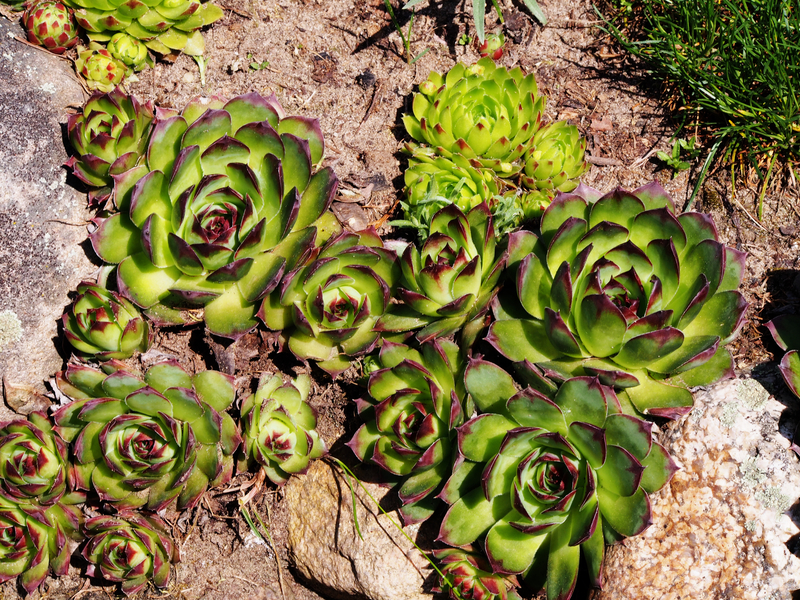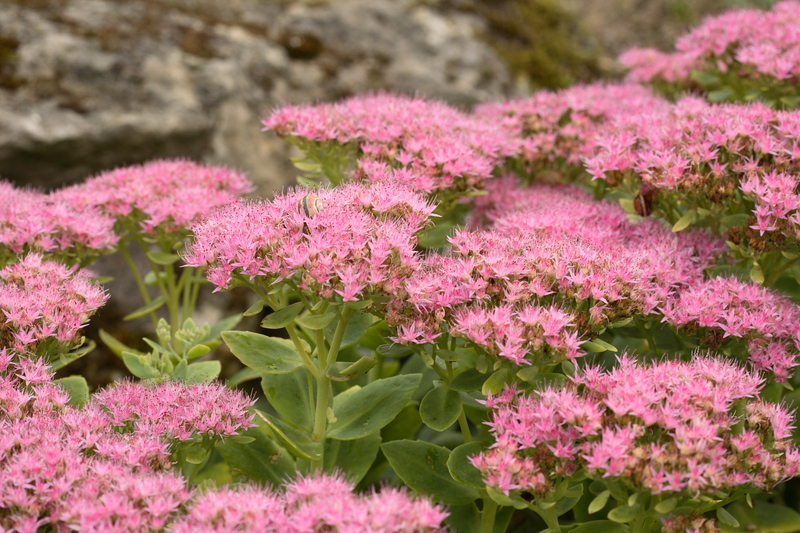Beginner's Guide to an Enviable Lawn: Simple Secrets to Success
Picture this: a lush, emerald-green lawn, the envy of all your neighbors. Achieving a beautiful yard isn't just for professional landscapers--anyone can cultivate a stunning and healthy lawn with the right knowledge and a handful of simple strategies. Whether you're a first-time homeowner or simply want to step up your lawn game, this comprehensive beginner's guide to an enviable lawn reveals foolproof secrets to transforming your yard with ease.
Why Focus on Lawn Care?
An immaculate lawn not only boosts your home's curb appeal but also creates a welcoming space for relaxation, play, and outdoor gatherings. A well-cared-for lawn:
- Improves property value
- Enhances the overall appearance of your home
- Reduces soil erosion
- Provides a cooling effect during hot months
- Offers a haven for local wildlife such as birds and beneficial insects

The Foundations of an Enviable Lawn
Before diving into advanced techniques, mastering the basics of lawn maintenance is crucial. Follow these fundamental steps to set yourself on the path to a thriving yard:
1. Choose the Right Grass Type
The key to a healthy lawn begins with selecting grass species suited to your climate and soil. Consider factors such as sunlight, rainfall, heat, cold, and traffic. Common types include:
- Cool-season grasses: Kentucky bluegrass, fescue, ryegrass (ideal for northern regions)
- Warm-season grasses: Bermuda, Zoysia, St. Augustine (perfect for southern climates)
Pro Tip: Consult your local garden center for recommendations on the best grass variety for your area.
2. Soil Preparation is the Secret Ingredient
An enviable lawn always starts with healthy soil. Here's how to get your soil in peak condition:
- Test your soil. Use an affordable soil test kit to analyze pH and nutrient levels.
- Add amendments such as compost, lime, or sulfur to balance pH and boost fertility.
- Aerate compacted soil to improve root growth and reduce thatch.
- Ensure good drainage to prevent soggy patches or standing water.
3. Sowing the Seeds of Success
For new lawns, proper seed selection and planting technique are essential:
- Sow seeds evenly with a spreader.
- Cover lightly with soil or straw to protect from birds and erosion.
- Keep soil consistently moist until grass is established.
- Avoid heavy foot traffic during this delicate period.
Simple Lawn Care Secrets for Beginners
Once your lawn is established, consistent maintenance is the key to an envied yard. These beginner-friendly lawn care tips will keep your grass lush and green all season long:
1. The Art of Proper Mowing
Many lawn enthusiasts underestimate the power of mowing. To promote thick, healthy growth:
- Keep blades sharp to avoid shredding grass tips.
- Don't cut too short--follow the one-third rule by never removing more than one-third of the grass blade's height.
- Mow when grass is dry to prevent clumping and disease.
- Change mowing patterns to prevent soil compaction and uneven growth.
- Leave grass clippings where possible to return vital nutrients to the soil (mulching).
2. Water Wisely
Watering your lawn properly makes all the difference. Over- or under-watering can lead to shallow roots and increase your lawn's susceptibility to pests and diseases:
- Water deeply and infrequently, encouraging robust root systems.
- Early morning is the best time to water, minimizing evaporation.
- Aim for about 1 inch of water per week, including rainfall.
- Check your soil's moisture by probing with a screwdriver--if it goes in easily, your lawn has enough water.
- Install a rain gauge or smart irrigation system for hassle-free watering.
3. Fertilizer: The Fuel for Green Lawns
Regular feeding is a major secret to an envy-inspiring yard. Here's how to nourish your grass:
- Apply a balanced, slow-release fertilizer in spring and fall.
- Choose fertilizer tailored to your grass type for best results.
- Follow instructions carefully to prevent burning your lawn.
- Organic options such as compost and well-rotted manure are great for eco-friendly growth.
4. Mastering Weed and Pest Control
Weeds and pests are the bane of every beautiful lawn. Stay vigilant with these strategies:
- Hand-pull weeds after rain for easier removal.
- Use pre-emergent herbicides in early spring to prevent weed seeds from germinating.
- Spot-treat problematic areas with selective weed killers.
- Encourage healthy turf to naturally choke out weeds and resist pests.
- Monitor for signs of pests (chewed blades, brown patches) and apply appropriate eco-friendly solutions.
5. Aeration and Dethatching: Let Your Lawn Breathe
Soil compaction and excess thatch can smother your grass. Aerate your lawn--preferably in spring or fall--to allow water, nutrients, and air to reach the roots. Use a dethatching rake or machine annually to remove the layer of dead grass and organic matter that inhibits growth.
Common Lawn Care Mistakes (and How to Avoid Them)
Even the most enthusiastic novices can make missteps on their journey to an envied lawn. Steer clear of these common errors:
- Cutting grass too short (scalping) makes it vulnerable to heat and weeds.
- Watering in the evening fosters disease and mold growth.
- Over-fertilizing leads to rapid growth, pest issues, and pollution of waterways.
- Ignoring soil quality and pH leads to poor lawn performance.
- Using the wrong grass type for your environment ensures disappointing results.
Seasonal Lawn Care Guide
Maintaining an unbeatable lawn year-round calls for seasonal adjustments. Here's a quick breakdown:
Spring
- Rake up debris and dethatch as needed
- Aerate compacted soil
- Overseed thin spots
- Apply pre-emergent weed control
- Begin regular mowing and fertilizing
Summer
- Mow higher to shade roots
- Water deeply during dry spells
- Watch for heat stress and pests
- Remove weeds by hand
Autumn
- Aerate and overseed for thick, healthy grass come spring
- Apply fall fertilizer to build root reserves
- Remove fallen leaves promptly
- Reduce mowing as growth slows
Winter
- Keep off dormant grass to prevent damage
- Service lawn equipment for next year
- Plan landscaping improvements for spring
Eco-friendly Practices for the Enviable Lawn
Want an impressive lawn that's also good for the planet? Adopting eco-friendly practices ensures your lawn care routine supports local wildlife and is safe for children and pets:
- Use organic fertilizers and natural pest controls
- Collect rainwater for irrigation
- Plant clover or native grasses that require less water and fertilizer
- Leave grass clippings (grasscycling) to add organic matter

Frequently Asked Questions
- How often should I mow my lawn?
Generally, once a week during peak growing seasons. Adjust frequency based on growth rate and season. - When is the best time to fertilize?
Spring and fall are ideal for fertilizing most lawns. - How can I get rid of brown patches?
Check for underwatering, pests, or fungal issues, and treat accordingly. Overseed and fertilize bare areas in fall or spring. - Do I need to rake grass clippings?
It's better to mulch clippings unless they form thick layers (which can smother grass).
Conclusion: Your Path to a Lush, Enviable Lawn Starts Now
An enviable lawn is more than a display of personal pride--it's the heart of your outdoor space, an invitation to connect with nature and community. With these simple secrets and best practices, even beginners can transform their yards into healthy, resilient, and attractive landscapes. Remember to take it one step at a time, monitor your progress, and enjoy every stage of your lawn's transformation. Start today, and soon, you'll be the proud owner of a yard that's truly the envy of the neighborhood!
Ready to start your journey? Embrace these lawn care secrets and watch your home's curb appeal bloom!